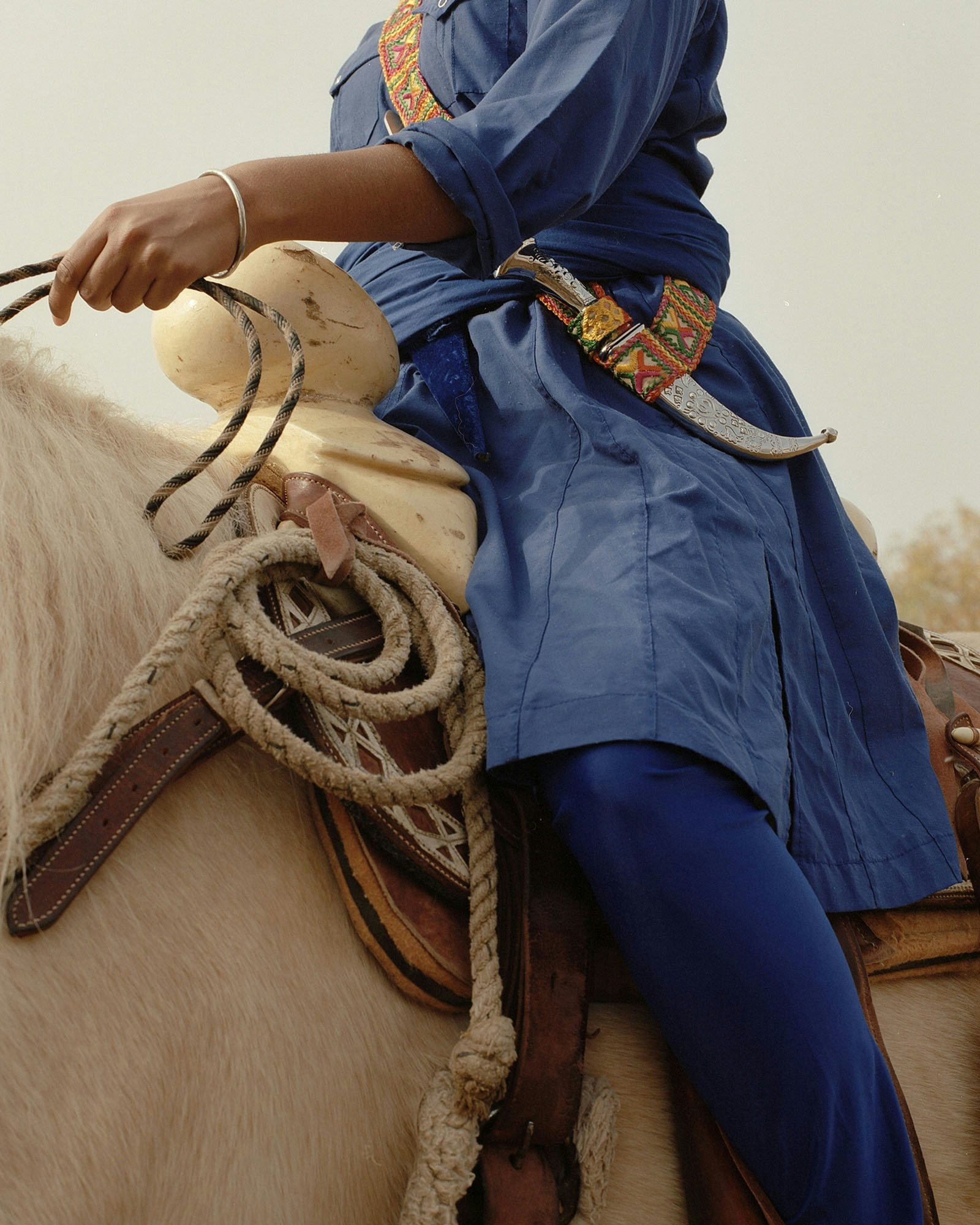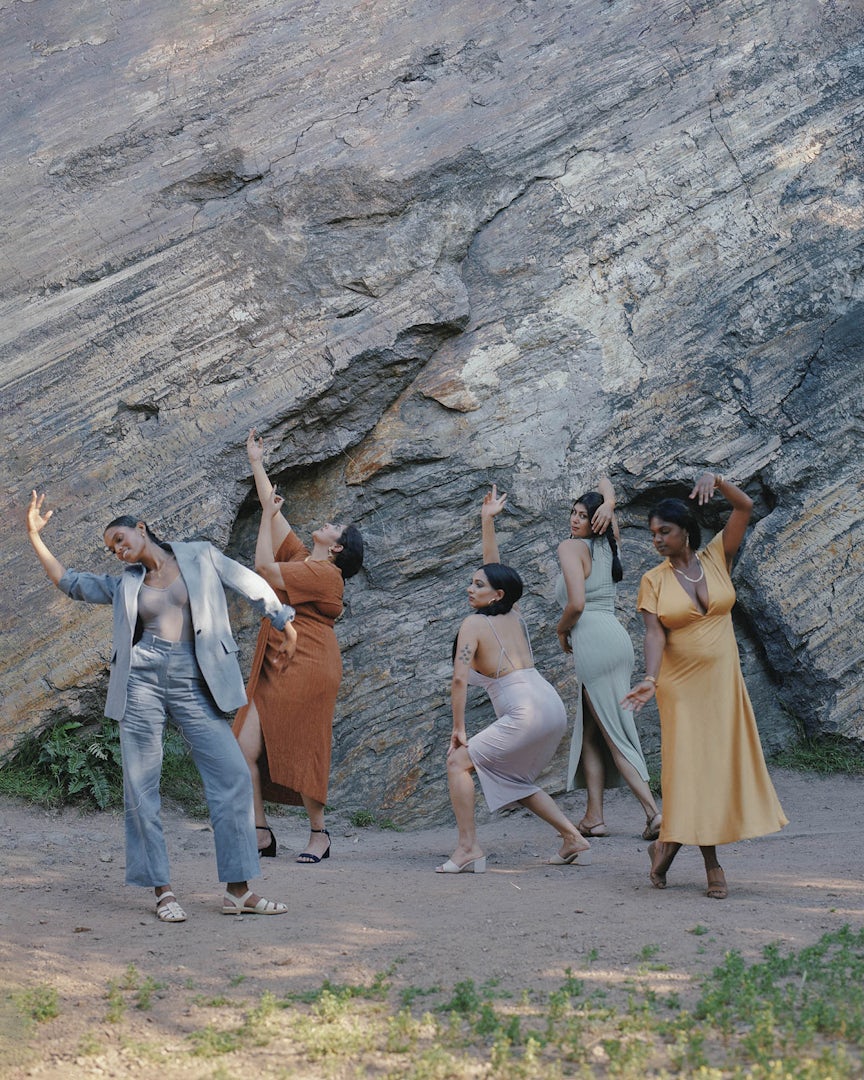Exposure: Simrah Farrukh
The photographer discusses the wide-ranging nature of her work, including the early influence of YouTube as well as complex issues of patriarchy, family and history
“I grew up on the internet,” photographer Simrah Farrukh says as I ask her how she began taking pictures. “There was a niche group of YouTubers who would style and photograph their Bratz Dolls, posing them around their homes inspired by America’s Next Top Model. I participated but never sent my photos due to lack of confidence, but this was my first experience creating a world through images.”
This love of storytelling stayed with Farrukh, who splits her time between Los Angeles and San Francisco, creating stills and films in collaboration with brands like Netflix, Disney, and Adobe. Confidence is no longer an issue for the American Pakistani whose portfolio is a bold, beautiful, and unapologetic reflection of the people and things she cares about most.
In Anardana: Stories of Dado, Farrukh collaborates with her grandmother in a series of joyful and striking portraits that speak to her personal history, something the artist is trying to preserve in the context of Dado’s progressive dementia. The project has been a deep bonding experience for the duo, not simply in spending time together but also in holding space for Dado to revisit her past and everything she has had to overcome.



“As an artist with [a flexible] schedule, I have the most availability in my family to help Dado with her day-to-day, make her breakfast, take her to her doctor appointments, tend to her when she is feeling unwell or has fallen,” explains Farrukh.
“Nurturing someone who once nurtured me, hearing her stories and the vulnerability and strength she has from her experiences as a mother losing two children shortly after they were born, then her younger brother when he was just 20 years old, has showed me so much depth into her as a human being. Over the last year, taking care of her has influenced how I think about life and how I want to carry myself with more grace and compassion despite any challenges that come my way as a woman.”
Like much of Farrukh’s work, intimacy and connection are the throughline, brought to life through the distinct materiality of her visual language. Colour is always present; harnessing the visceral power of jewel tones in tandem with natural earth tones, she grounds the images in a conversation with the miniature paintings of the Mughal period, a dynasty of Turkic-Mongol origin that ruled most of northern India from the early 16th to the mid-18th century. Known for their opulent colours and detailed storytelling, the Mughal miniatures inspire Farrukh, who thinks about her images as contemporary versions of these traditional scenes.

“The Mughal period is an important reference to me because paintings of women were often painted by men who were not allowed in the women’s quarters during that rule. Therefore, it’s safe to assume these were created from their imaginations,” Farrukh says.
“Women were kept out of the public during Mughal rule, and it makes me wonder what their life would have looked like through a female’s gaze. I find so much empowerment in a fully female space, away from the historically violent male gaze that is patriarchy. In my work, I recontextualise these themes, aligning them with what life is like for women today.”
Empowering women through storytelling is the beating heart of Farrukh’s practice, which she translates into her commercial and personal work. In Togetherness, she takes inspiration from Sultana’s Dream, a Bengali feminist utopian story written by Begum Rokeya in 1905 that reverses the gender dynamic of the Mughal period, positing a world where men are confined indoors, and women have taken over the public sphere, ending a war non-violently and restoring health and beauty to the world.



The project fantasises about what contemporary life might look like if the patriarchal gaze did not exist. Likewise, Wajood-e-Zan (meaning the “existence of women”) rewrites notions of freedom without restrictions for women and non-binary people. Interconnected is a visual celebration of indigenous and modern beauty traditions across cultures, rooted in self-preservation and our relationship to our environment. These works offer viewers, participants, and the artist herself a haven while simultaneously representing a rallying call that another way of life is possible.
This mission of liberation and empowerment fuels everything Farrukh does, born from the cognitive dissonance of growing up in America as a Pakistani Muslim girl. “I wasn’t popular at my predominantly white high school, and I believe it’s because I never conformed to whiteness,” Farrukh tells me as we come to the end of our conversation.
“I went from seeing my religion demonised on CNN and being surrounded by the casual racism of my classmates to feeling at peace within the rich culture of Pakistan or the large South Asian community who supported me. I never grew up with disdain for my ethnicity or religion, and I’d champion it at every chance I could get. In my life, I’ve felt like I belonged and othered, but my heritage and faith have always grounded me.”




